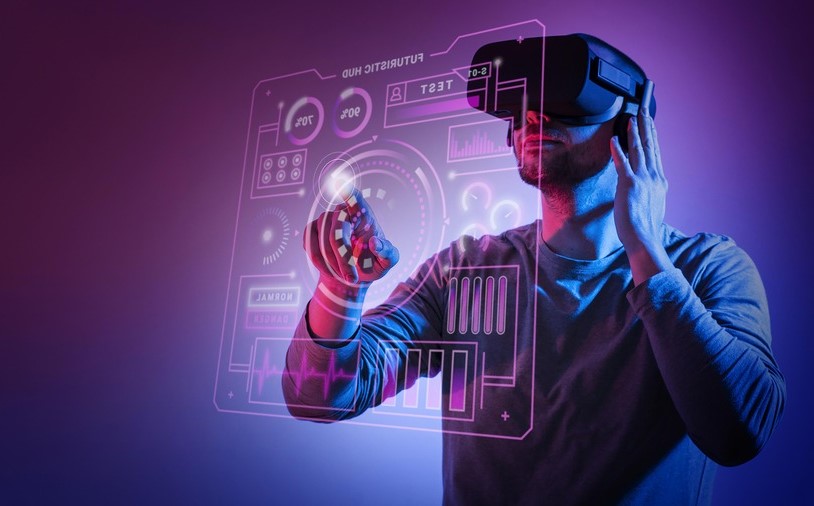What is Web3: The Decentralized Web of the Future
- 21 Sep 2024

Web3, often referred to as the decentralized web, is a groundbreaking step toward a fairer and more secure internet. It shifts power from centralized corporations to individual users by leveraging blockchain technology. In this article, we’ll explore what Web3 is, its transformative features, practical use cases, and how it contrasts with the centralized Web2.
What is Web3?
Web3, also called the decentralized web, is the next stage of internet evolution. Unlike Web2, where central servers manage data, Web3 decentralizes control, empowering users to take ownership of their information, identity, and assets. Blockchain technology lies at the heart of Web3, providing a transparent and secure infrastructure for this user-centric ecosystem.
The Evolution of the Internet
To understand Web3’s value, let’s trace how the web has evolved over time:
- Web1 (The Static Web): The first iteration of the internet featured static, read-only pages. Users could consume information but couldn’t interact with it meaningfully. Websites were primarily informational and lacked interactivity or personalization.
- Web2 (The Interactive Web): With Web2 came interactivity, user-generated content, and social media platforms like Facebook and Twitter. While this phase enabled collaboration and participation, it centralized power in the hands of corporations, raising concerns about privacy and data misuse.
- Web3 (The Decentralized Web): Web3 addresses Web2’s flaws by distributing control, empowering users, and creating a transparent ecosystem. It shifts trust from corporations to protocols, fostering a more democratic digital environment.

Key Features of Web3
1. Decentralization
Decentralization is the backbone of Web3. Instead of relying on centralized servers and authorities, Web3 systems use blockchain technology to distribute data and decision-making. This ensures that no single entity has excessive control, creating a fairer and more resilient ecosystem.
Examples of Decentralization:
- File storage: Decentralized storage solutions like IPFS (InterPlanetary File System) allow users to store files across multiple nodes, enhancing security and redundancy.
- Governance: Decentralized Autonomous Organizations (DAOs) enable users to vote on decisions in an equitable manner.
- Social Media: Decentralized platforms like Mastodon or Lens Protocol let users control their content and data, avoiding censorship and reliance on centralized servers.
- Marketplaces: Peer-to-peer platforms like OpenSea allow users to buy and sell NFTs directly, eliminating middlemen and enabling a more transparent trading experience.
- Finance: DeFi protocols such as Uniswap provide decentralized trading without traditional intermediaries, reducing costs and increasing accessibility for users worldwide.
2. Trustless and Permissionless Systems
Web3 eliminates the need for intermediaries like banks or brokers. With smart contracts, users can interact directly in a trustless manner, where rules are enforced by code. Permissionless systems mean that anyone can join and participate without barriers.
Real-world Application:
- A farmer in a rural area can access a DeFi loan without requiring a credit score or a traditional bank account.
- A small business owner can tokenize their inventory to raise capital, bypassing traditional lenders and crowdfunding platforms.
- Freelancers and gig workers can receive payments in cryptocurrency instantly, avoiding the delays and fees associated with international bank transfers.
- Gamers can earn cryptocurrency by playing blockchain-based games, which allows them to monetize their skills and time in ways traditional gaming doesn’t offer.
- A university student can store their academic credentials on a blockchain, providing a tamper-proof and globally recognized proof of their qualifications for future employers.
3. Ownership and Control
One of Web3’s core principles is empowering users to control their digital assets and identities. Through blockchain wallets, users can own cryptocurrencies, NFTs, and other digital items without relying on custodians like banks or tech companies.
Expanding Opportunities:
- Artists and musicians can sell NFTs of their work directly to fans, cutting out middlemen and retaining greater profits.
- Content creators on platforms like YouTube or TikTok can monetize their work using Web3-powered dApps, where they earn tokens for engagement instead of ad revenue controlled by centralized platforms.
- Writers can tokenize and sell chapters of their books as NFTs, granting buyers exclusive ownership or perks like early access or limited editions.
- Photographers can use blockchain to verify and protect the authenticity of their digital images, preventing unauthorized use or replication.
- Independent game developers can crowdfund their projects by creating utility tokens, giving early supporters a stake or rewards in the game’s ecosystem.
4. Tokenization
Tokenization allows for the representation of real-world or digital assets on a blockchain. These tokens can be bought, sold, or traded, creating liquidity for assets that were previously illiquid, such as real estate or art.
Types of Tokens:
- Fungible Tokens: Cryptocurrencies like Bitcoin or Ethereum.
- Non-Fungible Tokens (NFTs): Unique tokens representing ownership of a specific item, like digital art.

5. Interoperability
Web3 aims to connect platforms and blockchains seamlessly. Users can transfer assets or interact with decentralized applications (dApps) across multiple networks without friction.
Example:
- Using a single wallet, a user can stake cryptocurrency on Ethereum, play a blockchain-based game on Solana, and trade NFTs on Polygon.
- A traveler can exchange stablecoins across different blockchains like Binance Smart Chain and Avalanche to pay for accommodations and services globally, avoiding traditional currency exchange fees.
- A developer can create a decentralized application that accesses data or tokens from multiple blockchains, such as integrating Ethereum’s smart contract capabilities with Cardano’s transaction speed.
- A gamer can use an NFT weapon purchased in a blockchain-based game on Solana in another compatible game on Polygon, showcasing cross-platform asset utility.
- Artists can mint NFTs on one blockchain, such as Tezos, and sell them on marketplaces supported by other blockchains like Ethereum, reaching a broader audience.
- A DeFi user can move funds seamlessly between protocols across chains, such as borrowing on Aave (Ethereum) and using those funds in a PancakeSwap liquidity pool (Binance Smart Chain).
How Does Web3 Differ from Web2?
| Feature | Web2 | Web3 |
|---|---|---|
| Data Control | Centralized corporations | Decentralized user ownership |
| Identity | Username/password-based | Self-sovereign identity |
| Monetization | Corporations profit from data | Users benefit via token economies |
| Security | Vulnerable centralized servers | Blockchain encryption ensures security |
Use Cases of Web3
1. Decentralized Finance (DeFi)
DeFi platforms allow users to lend, borrow, or trade assets without the need for intermediaries. For instance, platforms like Aave and Uniswap operate using smart contracts to execute transactions, providing a transparent and inclusive financial ecosystem.
Impact on Financial Inclusion
- People in underbanked regions can access financial services without traditional banks.
- Migrant workers can send remittances to their families using cryptocurrency wallets, avoiding high transfer fees imposed by traditional services.
- Small businesses in developing countries can access decentralized crowdfunding platforms to raise capital, bypassing bureaucratic loan processes.
- Farmers can leverage blockchain-based insurance platforms, such as those offered by Etherisc, to protect against crop failure and receive payouts quickly.
- Students from low-income backgrounds can use tokenized scholarships or grants funded by decentralized networks to support their education.
- Women entrepreneurs, often excluded from traditional banking systems, can access DeFi platforms to secure microloans and grow their businesses.
2. Decentralized Applications (dApps)
dApps are applications that run on a blockchain network instead of centralized servers. Popular dApps include gaming platforms like Axie Infinity and social networks like Lens Protocol, which prioritize user privacy and transparency.
Benefits of dApps
- Transparency: Code is open-source, allowing anyone to verify how the application operates and ensuring trust in the system.
- No downtime: Blockchain networks ensure dApps remain operational, even in the event of server outages or failures.
- Enhanced Security: Transactions and data on dApps are encrypted and stored on the blockchain, reducing risks of hacking and unauthorized access.
- User Ownership: Users retain full control of their assets and data, unlike centralized applications where ownership often lies with the service provider.
- Global Accessibility: dApps are permissionless, meaning anyone with an internet connection and a compatible wallet can participate, regardless of location.
- Incentive Mechanisms: Many dApps integrate token-based rewards, providing financial incentives for users to engage with the platform.
- Interoperability: dApps often work across multiple blockchains, enabling seamless interactions and expanding user options.
3. Non-Fungible Tokens (NFTs)
NFTs represent unique ownership of assets like digital art, music, or collectibles. They’ve created vibrant marketplaces like OpenSea and introduced new revenue models for artists. While NFTs have faced skepticism and market fluctuations, they remain a powerful tool for digital ownership. For a detailed discussion, check out our article on Are NFTs Dead?.
Expanding NFT Use Cases
- Ticketing: NFTs can serve as tamper-proof event tickets, ensuring authenticity and preventing fraud in the resale market.
- Gaming: Players can own in-game items and trade them across platforms, creating value and ownership for their efforts in virtual worlds.
- Virtual Real Estate: NFTs are used to buy and sell virtual land in metaverse platforms like Decentraland and The Sandbox, allowing users to build and monetize virtual spaces.
- Loyalty Programs: Brands are exploring NFTs as unique digital assets that grant customers exclusive rewards, discounts, or memberships in loyalty programs.
- Art Authentication: NFTs help verify the provenance and authenticity of physical and digital art, making it easier for buyers and collectors to trust the source.
4. Data Privacy and Security
With Web3, users no longer need to trust corporations to handle their data. Blockchain ensures that data is encrypted and accessible only by those with the proper permissions.
Examples:
- A healthcare dApp could allow patients to share medical records securely with doctors, without centralized databases storing sensitive information.
- Individuals can store their digital identities in decentralized wallets, enabling them to prove their credentials (such as age or qualifications) without revealing additional personal details.
- E-commerce platforms built on blockchain can process transactions without storing customer payment information, reducing the risk of data breaches.
- Supply chain networks can use blockchain to track goods, ensuring transparency without exposing sensitive business information to unauthorized parties.
- Educational institutions can issue blockchain-based certificates and diplomas, allowing students to verify and share their credentials securely with employers or other organizations.
- Social media dApps can give users control over their personal data, allowing them to choose how their information is shared or monetized.
5. Decentralized Identity
Web3 introduces decentralized identity solutions where users control their credentials. Self-sovereign identity systems enhance privacy while enabling seamless authentication across platforms.
Real-World Use:
- Logging into websites without passwords, using a cryptographic wallet for verification.
- Employees can securely share verified employment history or credentials with prospective employers, eliminating the need for third-party background checks.
- Travelers can use decentralized identity solutions to store their passports, visas, and vaccination records, simplifying international travel while enhancing document security.
- Students can hold blockchain-based academic transcripts and certificates, making it easier to apply to universities or jobs across borders.
- Online platforms can verify users' ages for accessing restricted content without requiring them to share personal data like birthdates.
- Citizens can vote in elections or participate in referendums securely using decentralized identity solutions, ensuring transparency and fraud prevention.

Challenges of Web3
1. Scalability
Web3 systems, especially blockchains like Ethereum, have faced criticism for high fees and slow transaction speeds. However, advancements like Ethereum’s move to proof-of-stake and Layer 2 scaling solutions are addressing these concerns.
Innovations to Watch:
- Layer 2 Solutions: Platforms like Arbitrum and Optimism reduce congestion by processing transactions off-chain.
- Sharding: Ethereum 2.0 introduces sharding to improve scalability.
- ZK-Rollups: Zero-Knowledge Rollups (e.g., zkSync) bundle multiple transactions into a single proof, significantly reducing gas fees while maintaining security.
- Cross-Chain Bridges: Solutions like Polkadot and Cosmos enable seamless interoperability between blockchains, allowing assets and data to move freely across networks.
2. User Experience
Managing private keys and interacting with blockchain systems can be intimidating for non-technical users. Web3 needs more intuitive interfaces and educational resources to reach mainstream adoption.
Many Web3 applications require users to navigate complex processes like setting up wallets and safeguarding seed phrases, which can deter mainstream users. Simplifying these processes with user-friendly designs, guided tutorials, and one-click solutions for wallets and transactions can enhance accessibility.
Educational initiatives, such as tutorials and community support, are also essential to help users understand and trust Web3 platforms. By addressing these usability challenges, Web3 can appeal to a broader audience beyond tech-savvy individuals.
3. Regulatory Uncertainty
Governments are still exploring how to regulate Web3 technologies. Clearer guidelines are essential to foster innovation while protecting users.
Balancing Innovation and Regulation:
- Too much regulation could stifle innovation, but too little could expose users to risks like scams.
- Excessive restrictions on cryptocurrency trading might drive users to unregulated, high-risk platforms, reducing transparency and safety.
- A lack of clear guidelines for NFT marketplaces could lead to issues like copyright infringement, fraud, or fake assets flooding the market.
- Overly stringent privacy laws might limit the use of decentralized identity solutions, which aim to empower users with more control over their data.
- Insufficient regulation on DeFi protocols could expose users to exploits, such as smart contract vulnerabilities, while leaving victims with no recourse.
- Balanced policies can enable blockchain innovation in sectors like healthcare and supply chain without jeopardizing sensitive data or compliance with existing laws.
The Future of Web3
Web3 is not just a technological shift; it’s a societal one. By prioritizing decentralization, transparency, and user empowerment, Web3 has the potential to reshape industries, governance systems, and even the way individuals interact with technology. It goes beyond offering technical solutions—it challenges the centralization of power and promotes a more inclusive digital economy where everyone has equal opportunities to participate and benefit.
As Web3 matures, its influence will likely extend to critical sectors such as finance, healthcare, education, and governance, creating a world where intermediaries are minimized, and users can directly control their digital interactions and assets. However, for Web3 to reach its full potential, addressing scalability, regulation, and accessibility challenges will be essential.
Synergy with Emerging Technologies
Web3’s potential becomes even more significant when combined with other transformative technologies, such as artificial intelligence (AI) and the Internet of Things (IoT). For instance, AI-powered analytics can enhance the functionality of decentralized systems by providing better insights and automating decision-making processes. When integrated with IoT, blockchain-powered devices can create robust, automated networks.
For example, blockchain-enabled IoT devices can securely monitor and track goods throughout the supply chain, ensuring transparency and reducing fraud. Smart cities could leverage blockchain and IoT to manage energy consumption, traffic flows, and public services more efficiently. Additionally, AI and Web3 could team up to create personalized, privacy-focused digital assistants that operate without sharing sensitive data with centralized corporations.
These integrations demonstrate how Web3 is not an isolated concept but part of a broader technological revolution, paving the way for smarter, more interconnected systems that prioritize user control and data security.
A Global Perspective
While Web3 adoption is growing rapidly in developed countries, its potential impact in developing regions could be revolutionary. In areas where access to traditional banking, education, and government services is limited, Web3 offers innovative solutions. Decentralized finance (DeFi) can provide banking and lending services to millions of unbanked individuals, helping them participate in the global economy. Similarly, blockchain-based identity systems can grant people a secure and portable identity, which is crucial for accessing essential services like healthcare and voting.
Web3 also opens up educational opportunities by making resources and certifications accessible on a global scale. For instance, students in remote areas can access blockchain-verified credentials from online courses, allowing them to compete in the global job market. Additionally, the use of smart contracts extends far beyond crypto, enabling secure, transparent agreements across sectors like supply chain, healthcare, and education. Learn more in our article on How Smart Contracts Are Transforming Industries.
In this sense, Web3 has the potential to narrow global inequalities by leveling the playing field. It bridges the gap between developed and developing nations, fostering a more inclusive and equitable digital economy that empowers individuals regardless of their geographic or socioeconomic status.
Conclusion
Web3 is paving the way for a decentralized, user-first internet that prioritizes privacy, transparency, and empowerment. By addressing challenges like scalability and accessibility, it has the potential to revolutionize industries, reshape governance, and create a more equitable digital future.
Beyond its technological advancements, Web3 represents a shift in how individuals interact and collaborate in a digital world. It empowers users to control their data and assets, fostering trust and transparency. While challenges like scalability and regulation remain, the growing momentum around Web3 signals its transformative potential.
As more stakeholders embrace its possibilities, Web3 stands poised to create a fairer, more decentralized, and inclusive internet for everyone.







